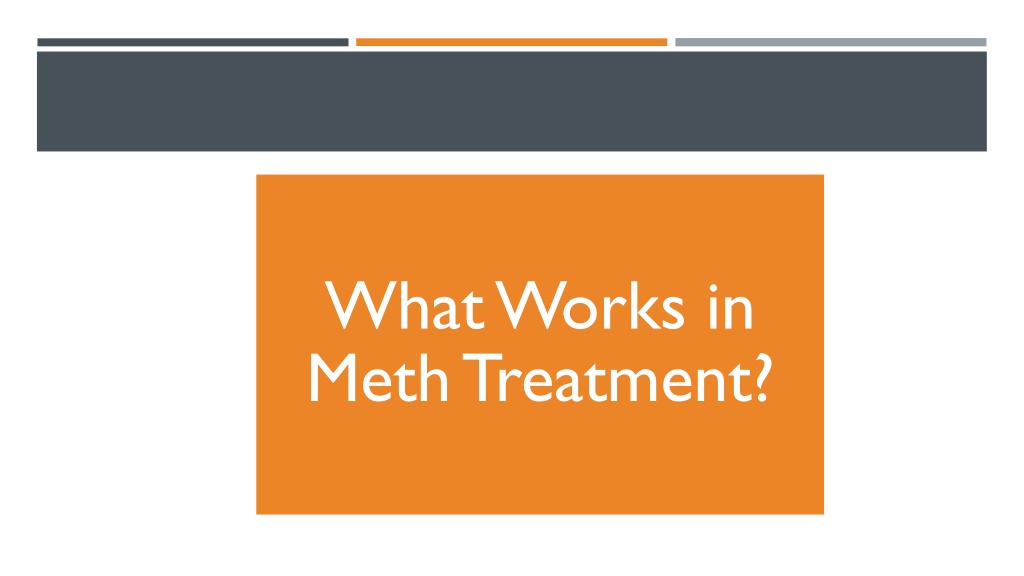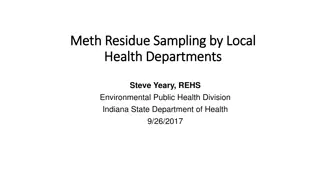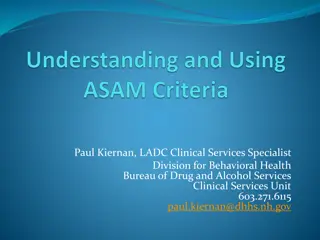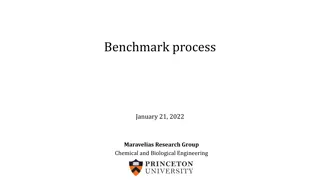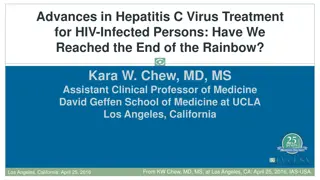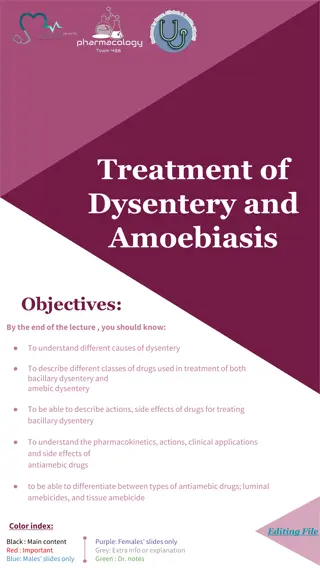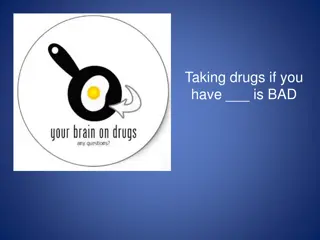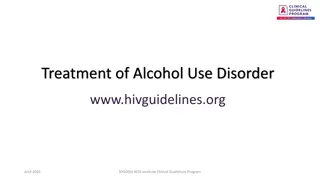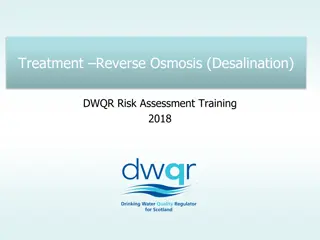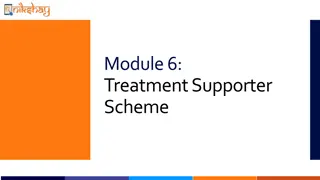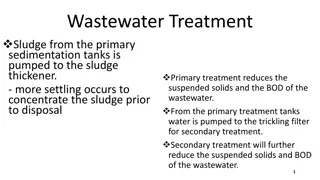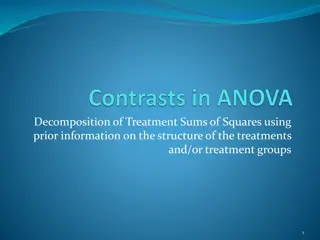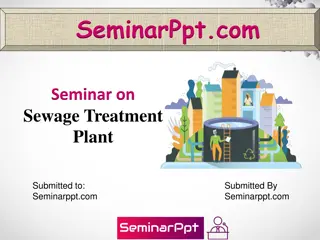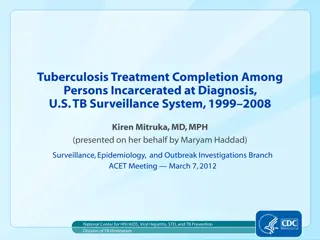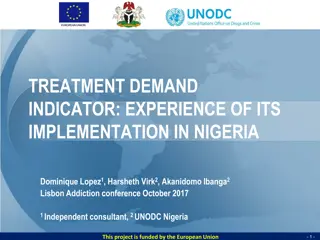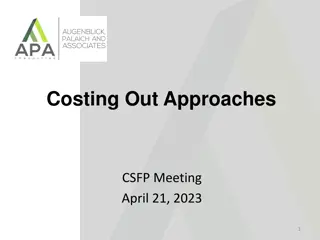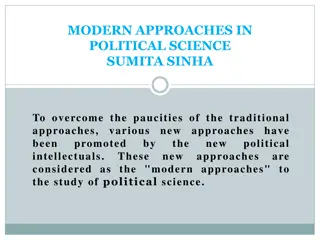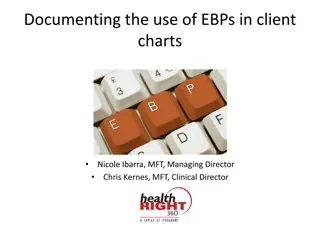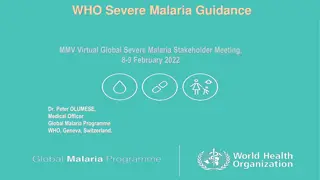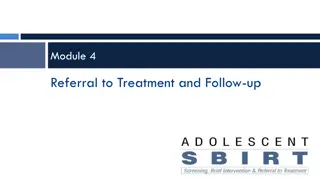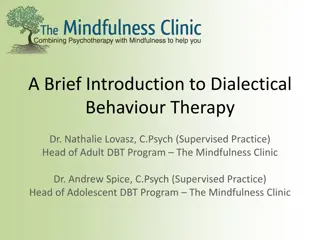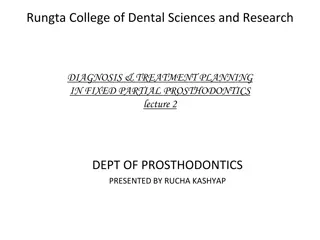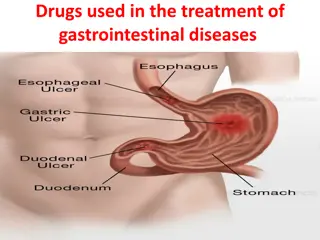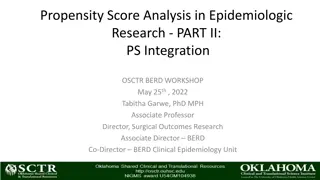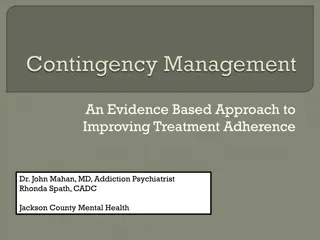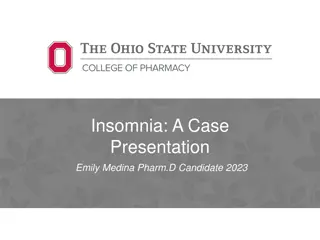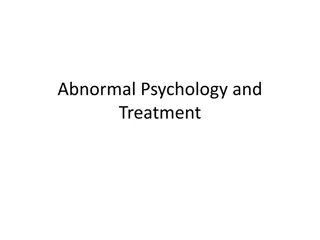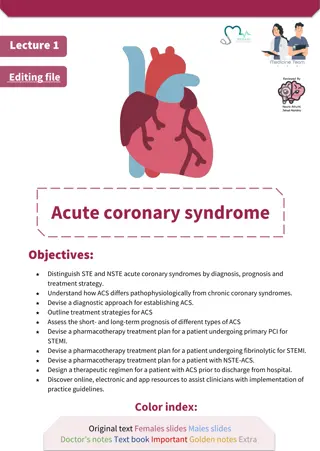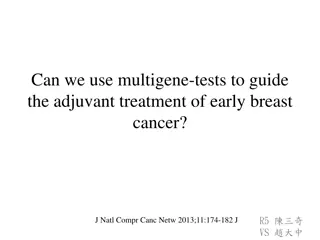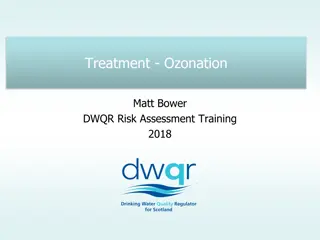Effective Approaches for Meth Treatment
Comprehensive behavioral therapies, motivational incentives, treatment supports, and various services such as vocational, financial, and peer support play crucial roles in methamphetamine treatment. Focus group suggestions emphasize the need for long-term treatment, community-based support, and addressing triggers for sustained recovery. Research highlights the connection between methamphetamine use and violence, underscoring the importance of effective interventions.
Download Presentation

Please find below an Image/Link to download the presentation.
The content on the website is provided AS IS for your information and personal use only. It may not be sold, licensed, or shared on other websites without obtaining consent from the author. Download presentation by click this link. If you encounter any issues during the download, it is possible that the publisher has removed the file from their server.
E N D
Presentation Transcript
What Works in Meth Treatment?
FOR METHAMPHETAMINE: COMPREHENSIVE, LONG TERM BEHAVIORAL THERAPIES Behavioral therapy Cognitive behavioral therapies Contingency management intervention Family education Individual counseling Encouragement for non-drug related activities Drug testing 12 step support
MOTIVATIONAL INCENTIVES FOR ENHANCING DRUG ABUSE RECOVERY (MIEDAR) Provides rewards (monetary and prizes) for submitting and testing negative through urine analysis and breath testing Participants earn up to $400 in prizes over 3 months
TREATMENT SUPPORTS FOR METH AND OTHER SUDS Comprehensive evidence-based programs (i.e., MATRIX) Recovery and social supports (AA, NA, MA, Phoenix) Case management and connection to community-based services including those addressing SDOH (i.e., housing) Peers to provide integration services and support from treatment to community; from hospital to community; from jail to community
Vocational services Financial services Universal Assessment Warm hand offs/referrals Treatment Planning Behavioral Therapy Monitoring Case Management Pharmocotherapy Recovery & Peer Support Continuing care Housing/ transport Medical care Education and childcare services Legal services
Focus Groups: Suggestions for Improving Treatment Need long enough treatment for meth to clear your mind and begin to engage. Repeated support for community-based treatment and long term support to maintain sobriety In the in-patient environment, I didn t learn how to deal with my triggers. I need to learn how to live and be sober Need to shorten wait times to enter treatment: During the wait for treatment, either jail or death are the only options
What does the research say about the link between methamphetamine use and violence? Acknowledgement: Linda Truitt, US Department of Justice
WHAT DO LAW ENFORCEMENT SAY? Law enforcement officials nationwide identify methamphetamine as the drug that contributes most to violent crime Customs and Border Patrol have reported a steady increase in meth seizures since 2012 Competition between wholesale drug trafficking organizations has led to lower methamphetamine prices, higher drug purity, and expanded drug-related violence concerns. Sources: 2017, U.S. Sentencing Commission, CBP Enforcement Statistics 2018, DEA 2017, 2017 National Drug Threat Survey-unclassified
TYPES OF VIOLENCE ASSOCIATED WITH SUBSTANCE USE Economic- Compulsive Systematic Pharmocological Goldstein Framework, 1985
PHARMACOLOGICAL EFFECTS OF METHAMPHETAMINE USE Irritability Paranoia Lack of inhibition Extreme distrust of others
WHAT DOES THE RESEARCH SAY? Evidence specifically on the association of methamphetamine and violence is accumulating, but the nature of the association and its context are not yet well understood. Naturalistic studies provide inconsistent evidence-some showing methamphetamine use correlated with violent behavior, and some showing no significant relationship . Violent behavior often proceeds meth use and users often report pre- existing aggression and anger due to trauma Brecht and Herbeck, 2013
STUDY OF 350 METH USERS RECEIVING TREATMENT 59% perceive that their meth use resulted in violent behavior Of those reporting violent behavior, 55% indicated they engaged in violent behavior before they began using meth The average age of initiation of violent criminal behavior (16.7 years) was lower than the average age of methamphetamine initiation (18.1) The majority of meth users also reported poly substance use. In this sample, 1/3 had been sexually abused and 1/2 have been physically abused before age 15. More than half reported that their parents had drug or alcohol problem. Brecht and Herbeck, 2013
STUDY OF FEMALE METHAMPHETAMINE USERS AND VIOLENCE 80% reported experiencing violence in their lifetimes: 67% had violence perpetrated against them, and 57% had perpetrated violence. 29% attributed their violent behaviors to meth and said they would not have been violent had they not been using meth but 59% described pre-existing anger issues that were enhanced by meth Most participants described perpetrating violence when they were coming down off of meth (i.e. withdrawing). Hamilton and Goeders 2010
PREDICTORS OF VIOLENCE AMONG METH USERS Using more than one type of drug Use of alcohol to intoxication Male gender Greater addiction severity Early history of physical abuse Younger age Brecht and Herbeck, 2013 Those reporting paranoia Involved in meth sales Early arrests
CAVEATS Correlation versus causation Relationship not well understood More research needed
Many of the substance use-related crimes in Yellowstone County are linked to methamphetamine use. The state laboratory has detected methamphetamine in hundreds of crimes in the last decade and methamphetamine is the most common drug seized by law enforcement officials in the community. 21
Methamphetamine users report that the drug is easy to obtain in Yellowstone County and that the potency and availability of the drug is driving addiction. They also report a correlation between methamphetamine use and violence, though some report that the drug simply aggravates and exacerbates underlying anger in a highly traumatized population. 21
Focus Groups: Why meth? Very easy to obtain and cheap to buy (and sell to maintain your habit) Meth use happens in family systems and social networks that are hard to break free from To cope with trauma To self-medicate for mental health concerns, including ADHD As a party drug used to heighten social experiences After seeing methamphetamine use normalized in their family and social networks, and not seeing severe or immediate consequences for those using To stay awake and get things done To lose weight To pass drug tests for employers (because it is known to clear your system more quickly than other drugs like marijuana)
Focus Groups: Why meth and violent crime? Meth is a stimulant that exacerbates already angry behavior. I was never a violent person, but when I used meth I experienced and perpetuated violence The meth feels a lot stronger than it used to be and you don t know what s going to happen when you use it. There s serious delusion about your confidence when on the drug. It gives you a huge false sense of confidence You don t understand consequences and think you are invincible. Property crime and stealing to afford methamphetamine (or trading stolen goods directly) Greater purity creates dependence more quickly and escalates violence People who are using meth aren t sleeping, are paranoid, are agitated, they re not eating, and all of their relationships are gone Violence and use may escalate when individuals start using intraveneously
Women using methamphetamine, particularly those of child-bearing age, are over-represented in the drug treatment courts, Department of Corrections treatment facilities, and in probation and parole. 21
What does the research say about the link between methamphetamine use and child welfare involvement?
PARENTS REPORTING ABUSE OF METHAMPHETAMINE WHOSE CHILDREN ARE IN THE CHILD WELFARE SYSTEM ARE MORE LIKELY TO BE: White Female Have less education Be unemployed Not be in a committed relationship Children of meth abusing parents are more likely to be placed into out of home care Carlson et al 2010
SPECIAL CONSIDERATIONS FOR METH USE IN CHILD WELFARE Long lasting high Binge/crash cycles Increased use in women Extended period required to stabilize in treatment Carlson et al 2010 and Sheridan 2014
CHILDREN IN THE CHILD WELFARE SYSTEM FROM METH ABUSING HOMES EXPERIENCE Higher rates of Personal and school related maladjustment Higher rates of PTSD and trauma symptomology Lower adaptive and social skills Sheridan 2014
CONCLUSION Some indication that meth use creates greater risk for abuse and neglect than other substances SUD in general is risk factor for child welfare involvement More research needed
QUESTIONS? POINTS FOR ACTION? 406-431-9260 | lovelandk@gmail.com
